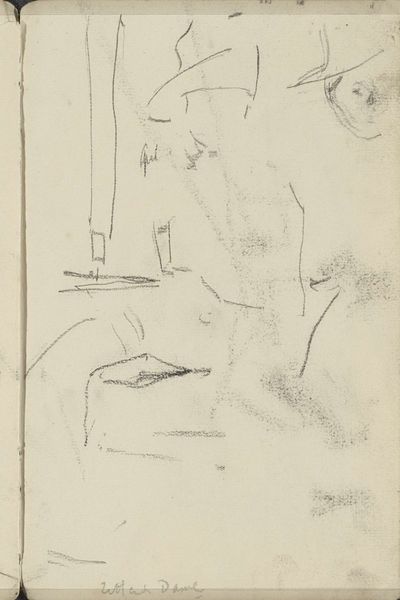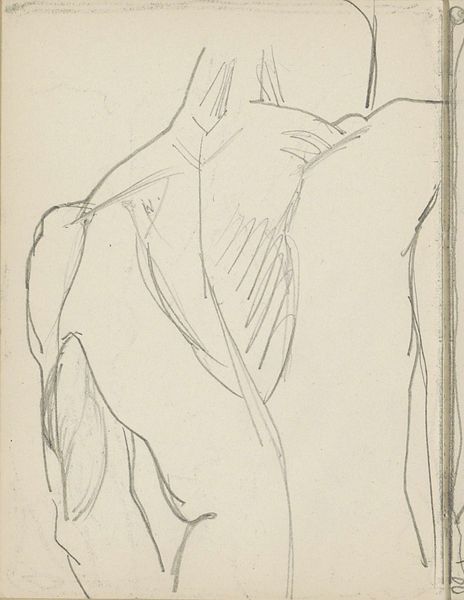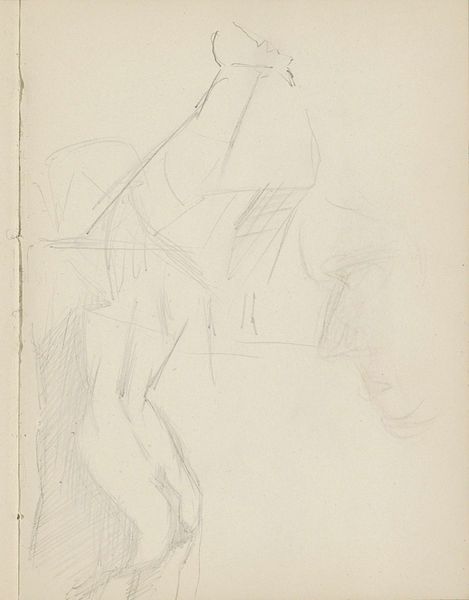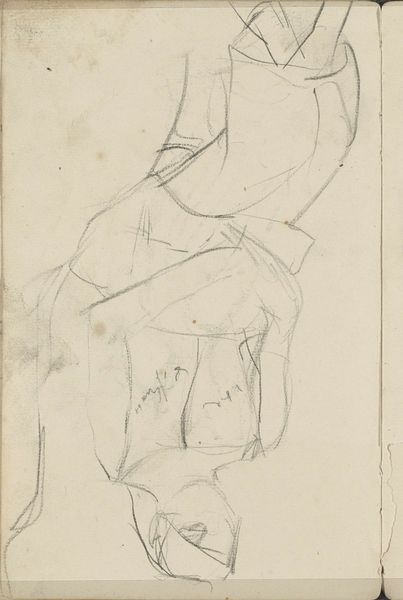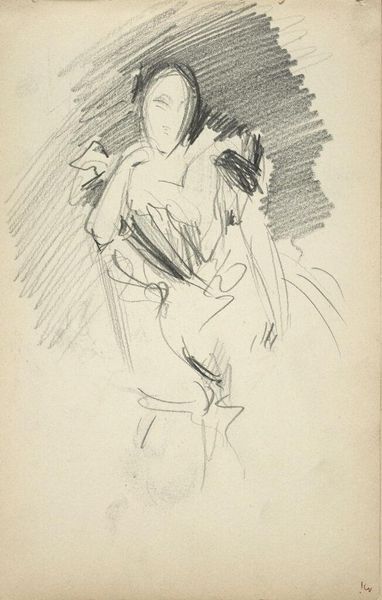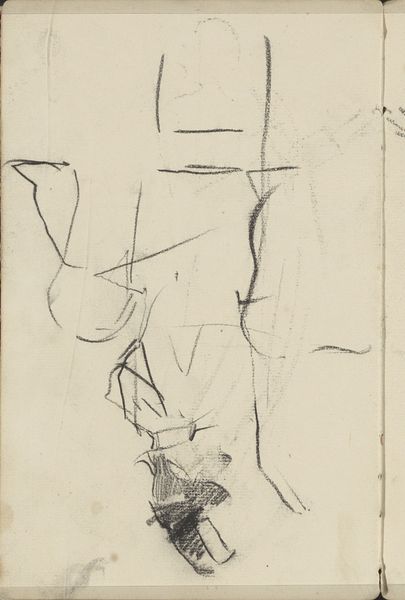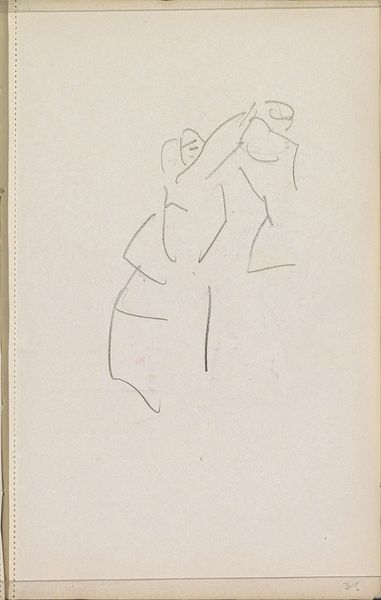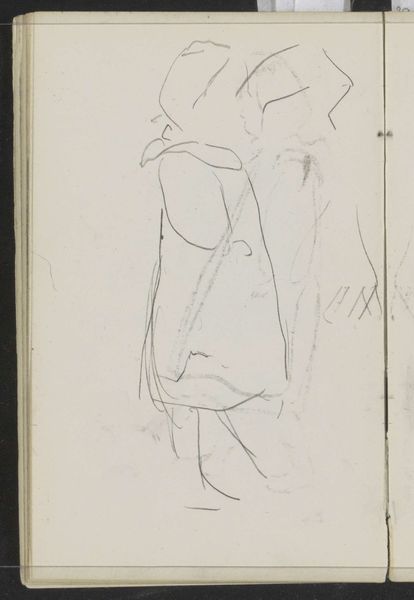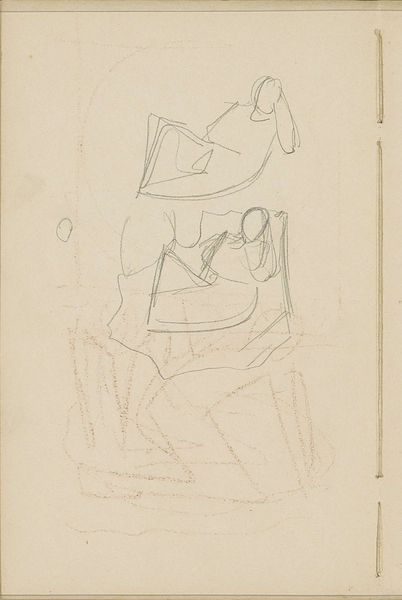
drawing, pencil
#
portrait
#
drawing
#
amateur sketch
#
light pencil work
#
pencil sketch
#
figuration
#
personal sketchbook
#
idea generation sketch
#
ink drawing experimentation
#
pen-ink sketch
#
pencil
#
sketchbook drawing
#
pencil work
#
sketchbook art
#
realism
Copyright: Rijks Museum: Open Domain
Curator: Let's turn our attention to this unassuming drawing, "Torso van een naakte vrouw," created sometime between 1906 and 1945. It resides here at the Rijksmuseum. Editor: It has a tentative air. Like a fleeting thought captured with a light touch. The sketchiness lends a feeling of intimacy. Curator: Indeed. This sketch offers a glimpse into the artistic process, it suggests an informal studio practice rather than a finished work intended for public display. I'm most drawn to the likely sitter, an unknown model whose image, here, is devoid of adornment. What might she have thought, posed there? What were her socio-economic circumstances? Editor: I see how the artist’s use of pencil creates a delicate tonal range, especially around the torso. The line varies, sometimes fading to almost nothing, at others, bolder to define the form. Note the emphasis on shape instead of detail. The lines are efficient. The way the planes suggest volume and weight interests me. Curator: Precisely. These sketches, ones likely scribbled in a personal sketchbook, become invaluable documents in revealing the ideologies prevalent at the time concerning the representation of women. It invites discussions about how artistic freedom and conventions were negotiated and it allows to reveal what type of cultural assumptions informed their representation. Editor: To me, its incompleteness amplifies the sense of dynamism and energy. One almost gets the feeling of seeing the model move in real-time through an almost ghost-like figure off to the side. This one provides only minimal contour, whereas the second displays bold strokes with its heavy lines which capture the distribution of mass. Curator: An interesting observation! It really does ask us to ponder the power structures inherent in artistic representation, whose perspectives dominate? Whose bodies are displayed, and under what conditions? Editor: I see what you mean! As we conclude, I’m left with the feeling of a quiet dialogue between the artist, model and viewer. Curator: And the act of witnessing art history as it unfolded. I agree!
Comments
No comments
Be the first to comment and join the conversation on the ultimate creative platform.


